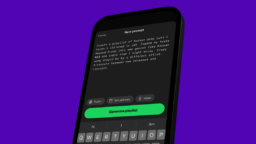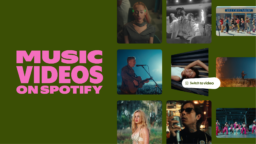I’ve got a confession to make. I’m a fake artist.
One afternoon, about a decade ago, I started nobbing about on GarageBand. Made a scratchy demo. It wasn’t very good.
Last month, thinking nothing of it, I uploaded that demo to Spotify, via Tunecore.
I called it PH, by Pinky Hue. On Pinky Hue Records.
(As it turns out, my pseudonymous tendencies were rather more in vogue than I’d appreciated.)
Then, for over a fortnight, nothing. Aside, that is, from one loyal monthly listener in Milton Keynes, England. (Thanks mum.)

But this past week-and-a-half, things have kicked right off.
First 1,000 listens, then 3,000, then 5,000. Word’s getting out.
As we stand today, Pinky Hue has racked up more than 10,000 Spotify plays – and is already marching towards 15,000.
Anyone know a good manager?
There’s just one problem with this empowering rags-to-riches story, of course.
I bought these streams off the internet.
And I could have bought 2 million of them.
The issue of fake streams has been on my mind since Midem back in June – in particular, a panel called ‘How distributors and streaming services collaborate.’
Anne-Marie Robert (VP International, Tunecore France) appeared alongside reps from the likes of The Orchard and ADA, and was asked how self-releasing artists could gain better access to streaming playlists which would then revolutionize their career.
“Contrary to my friends from ADA and The Orchard, we don’t provide direct trade marketing services because we let the artist do [that] and we take no commission,” she replied.
“But we give a lot of advice on our blog… and also, we are partnering with some services where you can buy some streams [on] Deezer and other websites which can help you.”
Robert specifically mentioned Feature.fm, which allows artists and rights-holders to have their music played in promotional slots on streaming platforms – for a price.

Robert’s comments triggered a subsequent thought in my head: How hard is it to go out and actually purchase fake plays online?
So, the other week, I Googled ‘buy fake Spotify streams’.
And voila: options.
The top result was for a company called Streamify, which boasts on its homepage: ‘Whether you want to get more fans, boost sales or just monitor your plays [sic] count, Streamify has the answers and insights you need to get your songs played more.’
Streamify LLC is officially located in Houston, Texas and offers a full menu of fake stream delicacies specific to Daniel Ek‘s platform.
For the timid trialist, $5 will buy you 1,000 Spotify plays.
For the bolder connoisseur, $200 will buy you 100,000 Spotify plays.
And for the full-on, screw-it-this-will-change-my-life desperado, $2,250 will buy you 2 million Spotify plays.
Other options for buying Spotify streams on the internet – and to be clear, MBW cannot vouch for the legitimacy of these companies – include Streampot/StreamKO and Mass Media, both of which also sell packages of fake YouTube plays.

Another website, Fiverr, takes things in another direction,.
Fiverr is a freelance marketplace operating across various disciplines.
It has a dedicated ‘Buy Spotify Plays‘ section, where it claims to enable customers to “[purchase] Spotify plays from music expert promotion freelancers & get your Spotify music or album promoted within 24hrs”.
A range of vendors are currently offering struggling artists the chance to buy their way onto playlists with over 50k followers.
One vendor, based in Brazil, even says they can “add your song to a verified playlist on Spotify” for just $10 (£7.68).

Before we come on to the ‘why this is quite a big deal when you think about it’ bit… here’s an important note about where (and where not) to point the finger.
While I was trying to bulk up Pinky Hue’s adoring fanbase – through fragrantly cheating the system – Streamify kept slapping me with a health warning.
Spotify’s anti-fake detection system is, in Streamify’s own words, “very sensitive to sudden changes in artists’ and songs’ popularity and the daily plays they receive”.
The site further warns: “[It] seems [Spotify] have some kind of automated alarm system in place, that monitors daily plays and raises (false) alarms.”
For this reason, Streamify recommends that its users heed caution in how many fake streams they try to buy in each 24 hour period.
It suggests never going above 5,000 a day for new tracks, before piling on the plays after a solid foundation is built.
Clearly, Spotify is not dumb.
[UPDATE: A Spotify spokesperson has provided MBW with the following statement: “We take fraudulent streaming activity extremely seriously. Spotify has multiple fraud detection measures in place monitoring consumption on the service to detect, investigate and deal with fraudulent activity. We are continuing to invest heavily in refining those processes and improving methods of detection and removal, and reducing the impact of that activity on legitimate creators and rightsholders.”]

So what’s the wider industry issue here?
There are a few.
First, it’s common knowledge that the music business fame escalator – the tried-and-tested series of machinations that gradually take an artist from unknown to superstar – are heavily invested in data.
What if some of that data, particularly early-stage data, is made of nothing but smoke and mirrors?
Case in point: if an act contacts a label, publisher, management company, law practice, live agent or local radio station with 2m+ Spotify streams under their belt, they are surely likely to get some attention.
This certainly isn’t exclusive to Spotify numbers. It will be no surprise to hear that options for ‘buy fake YouTube streams’ and ‘buy fake SoundCloud streams’ are even more popular/prevalent online.

For Pinky Hue’s 10,000+ streams, I shelled out a whopping $50 on Streamify.
Yet running that figure back through the calculator, it doesn’t seem too daft an outlay.
Spotify’s blended per-stream payout rate (roughly calculated) is thought to settle at somewhere between $0.005 and $0.006.
Guess how much 10,000 streams at that rate would theoretically nab me? $50 – $60. A profit of up to $10.
“All plays are absolutely real and eligible for royalties,” Streamify reassures its customers.
Lastly: The great unknown… just how widespread is the practice of buying streams online?
Who else within the music business is at it?
And how much of what we think to be real in terms of streaming accomplishments is actually true?
Naturally, it would be a massive shock to the music industry if anything other than 99.9%+ of plays on Spotify were genuine.
But it’s also worth bearing in mind that things can change: some metrics today suggest that 50%+ of the social media followings of certain superstars are comprised of bots.
To what extent is music’s total streaming mass online, and therefore all business forecasts and analysis based upon it, actually verifiable?
That’s a question which the music industry may have to ask itself – and explain to others – with renewed accountability in the years to come.Music Business Worldwide





